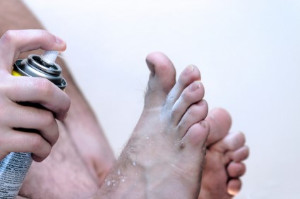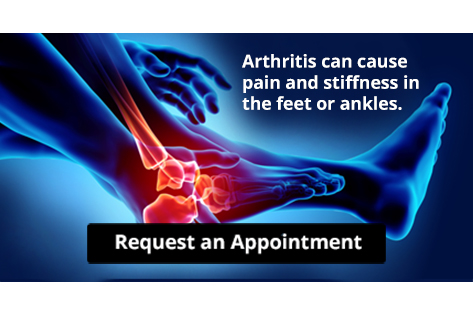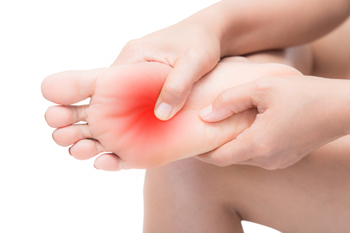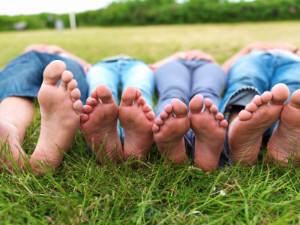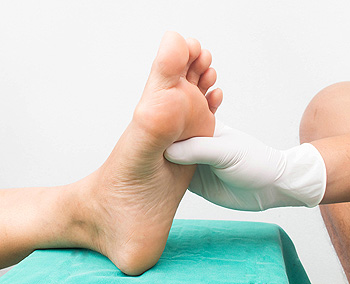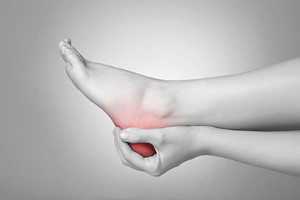Blogs
Plantar Warts Can Be Treated!
Stretches Before and After Running
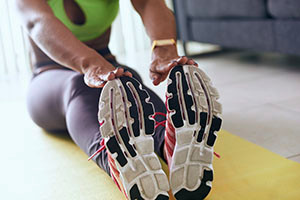 Many people who enjoy the sport of running will gradually understand the importance of properly warming up and cooling down before and after a run, in addition to eating healthy foods. Research has shown that a strong body will endure less injuries, and this is achieved by performing simple stretches and exercises. These can include lunges, hip flexor stretches, and shin splints can possibly be avoided by practicing heel and toe walks. If you would like additional information about how running injuries can affect the feet, and how to prevent them, it is suggested that you seek the counsel of a podiatrist.
Many people who enjoy the sport of running will gradually understand the importance of properly warming up and cooling down before and after a run, in addition to eating healthy foods. Research has shown that a strong body will endure less injuries, and this is achieved by performing simple stretches and exercises. These can include lunges, hip flexor stretches, and shin splints can possibly be avoided by practicing heel and toe walks. If you would like additional information about how running injuries can affect the feet, and how to prevent them, it is suggested that you seek the counsel of a podiatrist.
Exercising your feet regularly with the proper foot wear is a great way to prevent injuries. If you have any concerns about your feet, contact Dr. Dean D. Hinners of Illinois. Our doctor will treat your foot and ankle needs.
How to Prevent Running Injuries
Many common running injuries are caused by overuse and overtraining. When the back of the kneecap starts wearing out and starts causing pain in your knee, this is commonly referred to as runner’s knee. Runner’s knee is a decrease in strength in your quadriceps and can occur if you’re not wearing properly fitted or supporting shoes. To prevent runner’s knee, focusing on hip strengthening is a good idea, as well as strengthening your quads to keep the kneecaps aligned.
What Are Some Causes of Running Injuries?
- One cause of a common running injury is called iliotibial band syndrome.
- Plantar fasciitis is also another common injury.
- Stress fractures can occur from overtraining, lack of calcium, or even your running style.
Best Ways to Prevent Running Injuries
- Wear footwear that fits properly and suits your running needs.
- Running shoes are the only protective gear that runners have to safeguard them from injury.
- Make a training schedule. Adding strengthening exercises as well as regular stretching can help keep you strong and limber and can lessen the possibility of injuries.
- Stretching keeps muscles limber; this will help you gain better flexibility.
If you have any questions please feel free to contact one of our offices located in Metropolis and Eldorado, IL . We offer the newest diagnostic and treatment technologies for all your foot and ankle needs.
Read more about How to Prevent Running InjuriesCan Hammertoe Be Treated?
 The foot condition that is known as hammertoe is often unsightly and can cause pain and discomfort. It is considered to be a deformity, and causes the second and third toe to bend upward, resembling a hammer. Many patients who have developed this condition realize it can be caused by wearing shoes that do not have adequate room for the toes to move freely in. This ailment may be the reason why corns or calluses can develop on top of the toes, and the affected toes may appear swollen. There are patients who find relief when appropriate foot and toe stretches are frequently performed. Additionally, mild relief may be found when a protective pad is worn on top of the toes while wearing shoes. In severe cases, surgery may be an option to permanently straighten the toes. If you have developed hammertoe, please speak to a podiatrist who can properly diagnose and treat this condition.
The foot condition that is known as hammertoe is often unsightly and can cause pain and discomfort. It is considered to be a deformity, and causes the second and third toe to bend upward, resembling a hammer. Many patients who have developed this condition realize it can be caused by wearing shoes that do not have adequate room for the toes to move freely in. This ailment may be the reason why corns or calluses can develop on top of the toes, and the affected toes may appear swollen. There are patients who find relief when appropriate foot and toe stretches are frequently performed. Additionally, mild relief may be found when a protective pad is worn on top of the toes while wearing shoes. In severe cases, surgery may be an option to permanently straighten the toes. If you have developed hammertoe, please speak to a podiatrist who can properly diagnose and treat this condition.
Hammertoes can be a painful condition to live with. For more information, contact Dr. Dean D. Hinners of Illinois. Our doctor will answer any of your foot- and ankle-related questions.
Hammertoe
Hammertoe is a foot deformity that occurs due to an imbalance in the muscles, tendons, or ligaments that normally hold the toe straight. It can be caused by the type of shoes you wear, your foot structure, trauma, and certain disease processes.
Symptoms
- Painful and/or difficult toe movement
- Swelling
- Joint stiffness
- Calluses/Corns
- Physical deformity
Risk Factors
- Age – The risk of hammertoe increases with age
- Sex – Women are more likely to have hammertoe compared to men
- Toe Length – You are more likely to develop hammertoe if your second toe is longer than your big toe
- Certain Diseases – Arthritis and diabetes may make you more likely to develop hammertoe
Treatment
If you have hammertoe, you should change into a more comfortable shoe that provides enough room for your toes. Exercises such as picking up marbles may strengthen and stretch your toe muscles. Nevertheless, it is important to seek assistance from a podiatrist in order to determine the severity of your hammertoe and see which treatment option will work best for you.
If you have any questions, please feel free to contact one of our offices located in Metropolis and Eldorado, IL . We offer the newest diagnostic and treatment technologies for all your foot care needs.
Read more about HammertoeIs This a Toe Fracture?
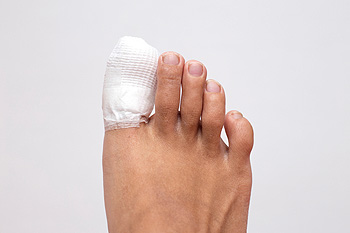 Despite the dramatic pain that we tend to associate with broken bones, it can actually sometimes be difficult to recognize a broken toe. A small stress fracture may only cause very mild symptoms that can often go ignored until the fracture has worsened, while a larger fracture may be more apparent. Symptoms of a toe fracture include pain, redness, swelling and bruising in the affected toe, difficulty bending, moving, or putting weight on the toe, or the toe being bent at an abnormal angle. A fracture can be diagnosed by your podiatrist via physical examination and imaging studies such as X-rays and MRIs. Your treatment options will depend on the severity of your fracture. If you think that you may have broken a toe, it is recommended that you seek the care of a podiatrist.
Despite the dramatic pain that we tend to associate with broken bones, it can actually sometimes be difficult to recognize a broken toe. A small stress fracture may only cause very mild symptoms that can often go ignored until the fracture has worsened, while a larger fracture may be more apparent. Symptoms of a toe fracture include pain, redness, swelling and bruising in the affected toe, difficulty bending, moving, or putting weight on the toe, or the toe being bent at an abnormal angle. A fracture can be diagnosed by your podiatrist via physical examination and imaging studies such as X-rays and MRIs. Your treatment options will depend on the severity of your fracture. If you think that you may have broken a toe, it is recommended that you seek the care of a podiatrist.
A broken toe can be very painful and lead to complications if not properly fixed. If you have any concerns about your feet, contact Dr. Dean D. Hinners from Illinois. Our doctor will treat your foot and ankle needs.
What to Know About a Broken Toe
Although most people try to avoid foot trauma such as banging, stubbing, or dropping heavy objects on their feet, the unfortunate fact is that it is a common occurrence. Given the fact that toes are positioned in front of the feet, they typically sustain the brunt of such trauma. When trauma occurs to a toe, the result can be a painful break (fracture).
Symptoms of a Broken Toe
- Throbbing pain
- Swelling
- Bruising on the skin and toenail
- The inability to move the toe
- Toe appears crooked or disfigured
- Tingling or numbness in the toe
Generally, it is best to stay off of the injured toe with the affected foot elevated.
Severe toe fractures may be treated with a splint, cast, and in some cases, minor surgery. Due to its position and the pressure it endures with daily activity, future complications can occur if the big toe is not properly treated.
If you have any questions please feel free to contact one of our offices located in Metropolis and Eldorado, IL . We offer the newest diagnostic and treatment technologies for all your foot and ankle needs.
Read more about What to Know About a Broken ToeIs It Dry Skin or Athlete's Foot?
Both dry skin and athlete’s foot are conditions that can affect the skin of the feet. Dry skin is characterized by a rough, flaky, or scaly texture and possible cracking, itchiness, irritation or redness. Athlete’s foot is a fungal infection of the skin of the feet and is characterized by red, itchy scales on the feet, a burning or stinging sensation, cracking or flaking skin, oozing blisters, and changes in the texture or color of the toenails. Because both conditions can make the skin of the feet dry, itchy, or irritated, it can sometimes be difficult to tell dry skin and athlete’s foot apart. For this reason, it is suggested that you seek the counsel of a podiatrist, who can determine the root of the problem and offer the appropriate treatments.
Athlete’s foot is an inconvenient condition that can be easily reduced with the proper treatment. If you have any concerns about your feet and ankles, contact Dr. Dean D. Hinners from Illinois. Our doctor will treat your foot and ankle needs.
Athlete’s Foot: The Sole Story
Athlete's foot, also known as tinea pedis, can be an extremely contagious foot infection. It is commonly contracted in public changing areas and bathrooms, dormitory style living quarters, around locker rooms and public swimming pools, or anywhere your feet often come into contact with other people.
Solutions to Combat Athlete’s Foot
- Hydrate your feet by using lotion
- Exfoliate
- Buff off nails
- Use of anti-fungal products
- Examine your feet and visit your doctor if any suspicious blisters or cuts develop
Athlete’s foot can cause many irritating symptoms such as dry and flaking skin, itching, and redness. Some more severe symptoms can include bleeding and cracked skin, intense itching and burning, and even pain when walking. In the worst cases, Athlete’s foot can cause blistering as well. Speak to your podiatrist for a better understanding of the different causes of Athlete’s foot, as well as help in determining which treatment options are best for you.
If you have any questions please feel free to contact one of our offices located in Metropolis and Eldorado, IL . We offer the newest diagnostic and treatment technologies for all your foot and ankle needs.
Read more about Athlete's FootArthritis Can Cause Pain in the Feet and Ankles
Pain in the Forefoot
The forefoot refers to the front part of the foot and includes the metatarsal bones, toe bones, and their connective tissues. There are many different conditions which could cause pain in the forefoot. Metatarsalgia is a general term used to refer to pain and tenderness in the ball of the foot. Potential causes of metatarsalgia include toe misalignment, arthritis, or wearing poorly fitted shoes. Sesamoiditis is a painful inflammation of the sesamoid bones located beneath the big toe joint. Morton’s neuroma is a painful condition caused by a pinched nerve between the toes. Toe pain may be caused by arthritis, bunions, hammertoes, or gout. If you have any pain in your forefoot, it is suggested that you consult with a podiatrist, who can diagnose the problem and offer effective treatments.
Foot Pain
Foot pain can be extremely painful and debilitating. If you have a foot pain, consult with Dr. Dean D. Hinners from Illinois. Our doctor will assess your condition and provide you with quality foot and ankle treatment.
Causes
Foot pain is a very broad condition that could be caused by one or more ailments. The most common include:
- Bunions
- Hammertoes
- Plantar Fasciitis
- Bone Spurs
- Corns
- Tarsal Tunnel Syndrome
- Ingrown Toenails
- Arthritis (such as Gout, Rheumatoid, and Osteoarthritis)
- Flat Feet
- Injury (from stress fractures, broken toe, foot, ankle, Achilles tendon ruptures, and sprains)
- And more
Diagnosis
To figure out the cause of foot pain, podiatrists utilize several different methods. This can range from simple visual inspections and sensation tests to X-rays and MRI scans. Prior medical history, family medical history, and any recent physical traumatic events will all be taken into consideration for a proper diagnosis.
Treatment
Treatment depends upon the cause of the foot pain. Whether it is resting, staying off the foot, or having surgery; podiatrists have a number of treatment options available for foot pain.
If you have any questions, please feel free to contact one of our offices located in Metropolis and Eldorado, IL . We offer the newest diagnostic and treatment technologies for all your foot care needs.
Read more about Foot PainWhat Should I Do About My Child's Smelly Feet?
Foot odor can be common among children and adolescents. When children’s feet sweat, bacteria that thrive in moist, dark environments, like their shoes, can begin to multiply rapidly. Bacteria eats dead skin cells and releases waste in the form of organic acids, often producing a strong and unpleasant smell. Fortunately, there are things that you can do at home to reduce foot odor. Encourage your child to wash and dry their feet thoroughly each day. Make sure that they wear properly fitted shoes made of breathable materials and clean, moisture-wicking socks to reduce sweat. Kill the bacteria in their shoes using a disinfectant spray. If foot odor does not improve with at home treatments, it is suggested that you take your child to see a podiatrist.
Making sure that your children maintain good foot health is very important as they grow. If you have any questions, contact Dr. Dean D. Hinners of Illinois. Our doctor can provide the care you need to keep you pain-free and on your feet.
Keeping Children's Feet Healthy
Having healthy feet during childhood can help prevent medical problems later in life, namely in the back and legs. As children grow, their feet require different types of care. Here are some things to consider...
Although babies do not walk yet, it is still very important to take care of their feet.
Avoid putting tight shoes or socks on his or her feet.
Allow the baby to stretch and kick his or her feet to feel comfortable.
As a toddler, kids are now on the move and begin to develop differently. At this age, toddlers are getting a feel for walking, so don’t be alarmed if your toddler is unsteady or ‘walks funny’.
As your child gets older, it is important to teach them how to take care of their feet.
Show them proper hygiene to prevent infections such as fungus.
Be watchful for any pain or injury.
Have all injuries checked by a doctor as soon as possible.
Comfortable, protective shoes should always be worn, especially at play.
If you have any questions please feel free to contact one of our offices located in Metropolis and Eldorado, IL . We offer the newest diagnostic and treatment technologies for all your foot and ankle needs.
Read more about How to Care for Your Child's FeetNerves Affected by Peripheral Neuropathy
Peripheral neuropathy is a condition in which the nerves of the peripheral nervous system become damaged or diseased. These nerves are responsible for sending messages from the brain and spinal cord to the rest of the body. The nerves of the feet are often affected as well. Every nerve in your peripheral system has a specific function. Motor nerve neuropathy affects the nerves responsible for muscle movement, while sensory neuropathy affects the nerves responsible for feeling sensation. Autonomic nerves control functions such as blood pressure, heart rate, and digestion. Symptoms vary based on the type of neuropathy that you have. Broadly, the symptoms one might experience due to peripheral neuropathy include burning, prickling, or tingling sensations in the feet, sharp pains, numbness, and muscle weakness. If you think that you are afflicted with peripheral neuropathy in your feet, it is suggested that you see a podiatrist for treatment.
Neuropathy
Neuropathy can be a potentially serious condition, especially if it is left undiagnosed. If you have any concerns that you may be experiencing nerve loss in your feet, consult with Dr. Dean D. Hinners from Illinois. Our doctor will assess your condition and provide you with quality foot and ankle treatment for neuropathy.
What Is Neuropathy?
Neuropathy is a condition that leads to damage to the nerves in the body. Peripheral neuropathy, or neuropathy that affects your peripheral nervous system, usually occurs in the feet. Neuropathy can be triggered by a number of different causes. Such causes include diabetes, infections, cancers, disorders, and toxic substances.
Symptoms of Neuropathy Include:
- Numbness
- Sensation loss
- Prickling and tingling sensations
- Throbbing, freezing, burning pains
- Muscle weakness
Those with diabetes are at serious risk due to being unable to feel an ulcer on their feet. Diabetics usually also suffer from poor blood circulation. This can lead to the wound not healing, infections occurring, and the limb may have to be amputated.
Treatment
To treat neuropathy in the foot, podiatrists will first diagnose the cause of the neuropathy. Figuring out the underlying cause of the neuropathy will allow the podiatrist to prescribe the best treatment, whether it be caused by diabetes, toxic substance exposure, infection, etc. If the nerve has not died, then it’s possible that sensation may be able to return to the foot.
Pain medication may be issued for pain. Electrical nerve stimulation can be used to stimulate nerves. If the neuropathy is caused from pressure on the nerves, then surgery may be necessary.
If you have any questions, please feel free to contact one of our offices located in Metropolis and Eldorado, IL . We offer the newest diagnostic and treatment technologies for all your foot care needs.
Read more about NeuropathyWhat Causes Burning Pain in the Heel?
A burning sensation in the heel can be a troubling symptom. Burning pain in the heel or bottom of the foot that has a tingling or prickling quality, causes numbness, feels hot, and is worse at night may be indicative of nerve damage or a disorder affecting the nerves that supply the foot. There are many conditions that can cause this type of damage, including diabetic neuropathy, physical trauma or injuries, tarsal tunnel syndrome, autoimmune diseases, and certain infections. If you have burning heel pain, it is suggested that you visit a podiatrist. A podiatrist can help diagnose the cause of your pain and find the right treatment for you.
Many people suffer from bouts of heel pain. For more information, contact Dr. Dean D. Hinners of Illinois. Our doctor can provide the care you need to keep you pain-free and on your feet.
Causes of Heel Pain
Heel pain is often associated with plantar fasciitis. The plantar fascia is a band of tissues that extends along the bottom of the foot. A rip or tear in this ligament can cause inflammation of the tissue.
Achilles tendonitis is another cause of heel pain. Inflammation of the Achilles tendon will cause pain from fractures and muscle tearing. Lack of flexibility is also another symptom.
Heel spurs are another cause of pain. When the tissues of the plantar fascia undergo a great deal of stress, it can lead to ligament separation from the heel bone, causing heel spurs.
Why Might Heel Pain Occur?
- Wearing ill-fitting shoes
- Wearing non-supportive shoes
- Weight change
- Excessive running
Treatments
Heel pain should be treated as soon as possible for immediate results. Keeping your feet in a stress-free environment will help. If you suffer from Achilles tendonitis or plantar fasciitis, applying ice will reduce the swelling. Stretching before an exercise like running will help the muscles. Using all these tips will help make heel pain a condition of the past.
If you have any questions please contact one of our offices located in Metropolis and Eldorado, IL . We offer the newest diagnostic and treatment technologies for all your foot and ankle needs.
Read more about Heel PainMore...
Foot Conditions Caused by High Heels
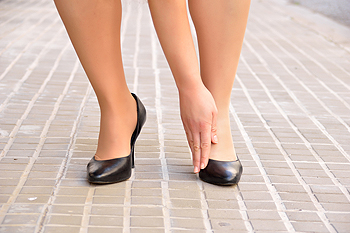 There are many women who enjoy wearing high heels, but they may not be aware of the potential foot conditions that they can cause. Painful foot ailments may be prevented when certain measures are implemented. These can include choosing shoes that fit perfectly, which can provide an adequate amount of ankle support. Additionally, some women find it helpful to stretch the shoe slightly by wearing socks, as this may help to provide a good fit. It can be beneficial to wear different types of high heels, and a smaller heel may help alleviate aching feet. Blisters can be a common ailment as a result of wearing high heels, and it may help to wear a bandage over problem areas. If you would like additional information about the effect high heels may have on your feet, please confer with a podiatrist.
There are many women who enjoy wearing high heels, but they may not be aware of the potential foot conditions that they can cause. Painful foot ailments may be prevented when certain measures are implemented. These can include choosing shoes that fit perfectly, which can provide an adequate amount of ankle support. Additionally, some women find it helpful to stretch the shoe slightly by wearing socks, as this may help to provide a good fit. It can be beneficial to wear different types of high heels, and a smaller heel may help alleviate aching feet. Blisters can be a common ailment as a result of wearing high heels, and it may help to wear a bandage over problem areas. If you would like additional information about the effect high heels may have on your feet, please confer with a podiatrist.
High heels have a history of causing foot and ankle problems. If you have any concerns about your feet or ankles, contact Dr. Dean D. Hinners from Illinois. Our doctor can provide the care you need to keep you pain-free and on your feet.
Effects of High Heels on the Feet
High heels are popular shoes among women because of their many styles and societal appeal. Despite this, high heels can still cause many health problems if worn too frequently.
Which Parts of My Body Will Be Affected by High Heels?
- Ankle Joints
- Achilles Tendon – May shorten and stiffen with prolonged wear
- Balls of the Feet
- Knees – Heels cause the knees to bend constantly, creating stress on them
- Back – They decrease the spine’s ability to absorb shock, which may lead to back pain. The vertebrae of the lower back may compress.
What Kinds of Foot Problems Can Develop from Wearing High Heels?
- Corns
- Calluses
- Hammertoe
- Bunions
- Morton’s Neuroma
- Plantar Fasciitis
How Can I Still Wear High Heels and Maintain Foot Health?
If you want to wear high heeled shoes, make sure that you are not wearing them every day, as this will help prevent long term physical problems. Try wearing thicker heels as opposed to stilettos to distribute weight more evenly across the feet. Always make sure you are wearing the proper shoes for the right occasion, such as sneakers for exercising. If you walk to work, try carrying your heels with you and changing into them once you arrive at work. Adding inserts to your heels can help cushion your feet and absorb shock. Full foot inserts or metatarsal pads are available.
If you have any questions please feel free to contact one of our offices located in Metropolis and Eldorado, IL . We offer the newest diagnostic and treatment technologies for all your foot and ankle needs.
Read more about Effect of High Heels on the FeetGout Pain Can Be Managed
What Causes Gout?
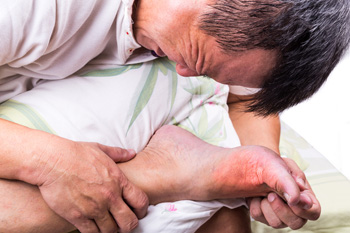 Gout is a condition characterized by acute pain and inflammation in the joints that is caused by a buildup of uric acid. The joints of the feet, and especially the joint at the base of the big toe, are frequently affected. Symptoms of gout include sudden severe pain in one or more joints, skin discoloration, warmth, and swelling over the affected area, chills, fever, and a general feeling of illness. The buildup of uric acid that causes gout symptoms to develop may be due to the body producing too much uric acid. Another factor may be the kidneys not being able to get rid of enough uric acid, or from eating foods high in purines, which get converted to uric acid in the body. Gout attacks can be triggered by drinking alcohol, eating a lot of protein-rich foods, emotional stress, fatigue, illness, and minor surgery. For more information about gout, consult with a podiatrist today.
Gout is a condition characterized by acute pain and inflammation in the joints that is caused by a buildup of uric acid. The joints of the feet, and especially the joint at the base of the big toe, are frequently affected. Symptoms of gout include sudden severe pain in one or more joints, skin discoloration, warmth, and swelling over the affected area, chills, fever, and a general feeling of illness. The buildup of uric acid that causes gout symptoms to develop may be due to the body producing too much uric acid. Another factor may be the kidneys not being able to get rid of enough uric acid, or from eating foods high in purines, which get converted to uric acid in the body. Gout attacks can be triggered by drinking alcohol, eating a lot of protein-rich foods, emotional stress, fatigue, illness, and minor surgery. For more information about gout, consult with a podiatrist today.
Gout is a foot condition that requires certain treatment and care. If you are seeking treatment, contact Dr. Dean D. Hinners from Illinois. Our doctor will treat your foot and ankle needs.
What Is Gout?
Gout is a type of arthritis caused by a buildup of uric acid in the bloodstream. It often develops in the foot, especially the big toe area, although it can manifest in other parts of the body as well. Gout can make walking and standing very painful and is especially common in diabetics and the obese.
People typically get gout because of a poor diet. Genetic predisposition is also a factor. The children of parents who have had gout frequently have a chance of developing it themselves.
Gout can easily be identified by redness and inflammation of the big toe and the surrounding areas of the foot. Other symptoms include extreme fatigue, joint pain, and running high fevers. Sometimes corticosteroid drugs can be prescribed to treat gout, but the best way to combat this disease is to get more exercise and eat a better diet.
If you have any questions please feel free to contact one of our offices located in Metropolis and Eldorado, IL . We offer the newest diagnostic and treatment technologies for all your foot and ankle needs.
Read more about GoutFive Tips for Everyday Foot Care
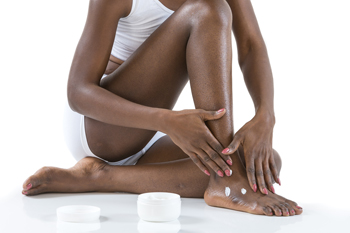 As the foundation of your body, your feet play an important role in helping you go about your day. But despite their importance, we often neglect our feet, increasing our risk of developing various foot problems. Taking small steps every day to care for your feet can help keep them healthy. Wearing comfortable, properly fitted shoes can help prevent problems such as hammertoes, corns, calluses, blisters, ingrown toenails, and general foot pain. Wearing socks can keep excess moisture off your feet, and pad the foot, preventing excess wear and tear. Taking walks regularly helps strengthen the muscles of the feet. Finally, washing and drying the feet thoroughly can help prevent foot odor and fungal infections, while moisturizing the feet can prevent dry and cracked heels. For more information about everyday foot care, please consult with a podiatrist.
As the foundation of your body, your feet play an important role in helping you go about your day. But despite their importance, we often neglect our feet, increasing our risk of developing various foot problems. Taking small steps every day to care for your feet can help keep them healthy. Wearing comfortable, properly fitted shoes can help prevent problems such as hammertoes, corns, calluses, blisters, ingrown toenails, and general foot pain. Wearing socks can keep excess moisture off your feet, and pad the foot, preventing excess wear and tear. Taking walks regularly helps strengthen the muscles of the feet. Finally, washing and drying the feet thoroughly can help prevent foot odor and fungal infections, while moisturizing the feet can prevent dry and cracked heels. For more information about everyday foot care, please consult with a podiatrist.
Everyday foot care is very important to prevent infection and other foot ailments. If you need your feet checked, contact Dr. Dean D. Hinners from Illinois. Our doctor can provide the care you need to keep you pain-free and on your feet.
Everyday Foot Care
Often, people take care of their bodies, face and hair more so than they do for their feet. But the feet are a very important aspect of our bodies, and one that we should pay more attention to. Without our feet, we would not be able to perform most daily tasks.
It is best to check your feet regularly to make sure there are no new bruises or cuts that you may not have noticed before. For dry feet, moisturizer can easily be a remedy and can be applied as often as necessary to the affected areas. Wearing shoes that fit well can also help you maintain good foot health, as well as making it easier to walk and do daily activities without the stress or pain of ill-fitting shoes, high heels, or even flip flops. Wearing clean socks with closed shoes is important to ensure that sweat and bacteria do not accumulate within the shoe. Clean socks help to prevent Athlete’s foot, fungi problems, bad odors, and can absorb sweat.
If you have any questions please feel free to contact one of our offices located in Metropolis and Eldorado, IL . We offer the newest diagnostic and treatment technologies for all your foot and ankle needs.
Read more about Every Day Foot Care
